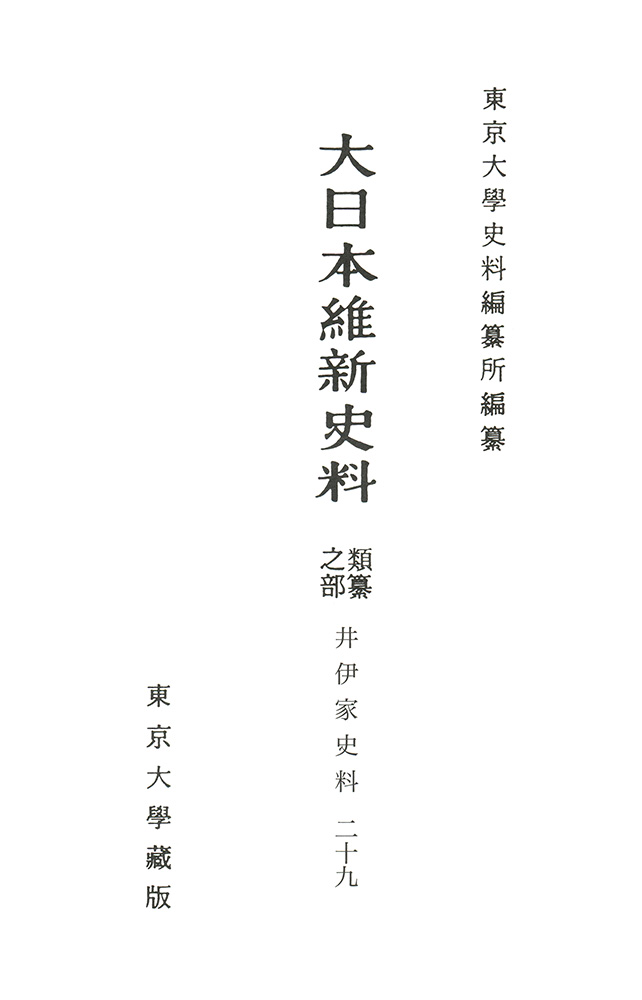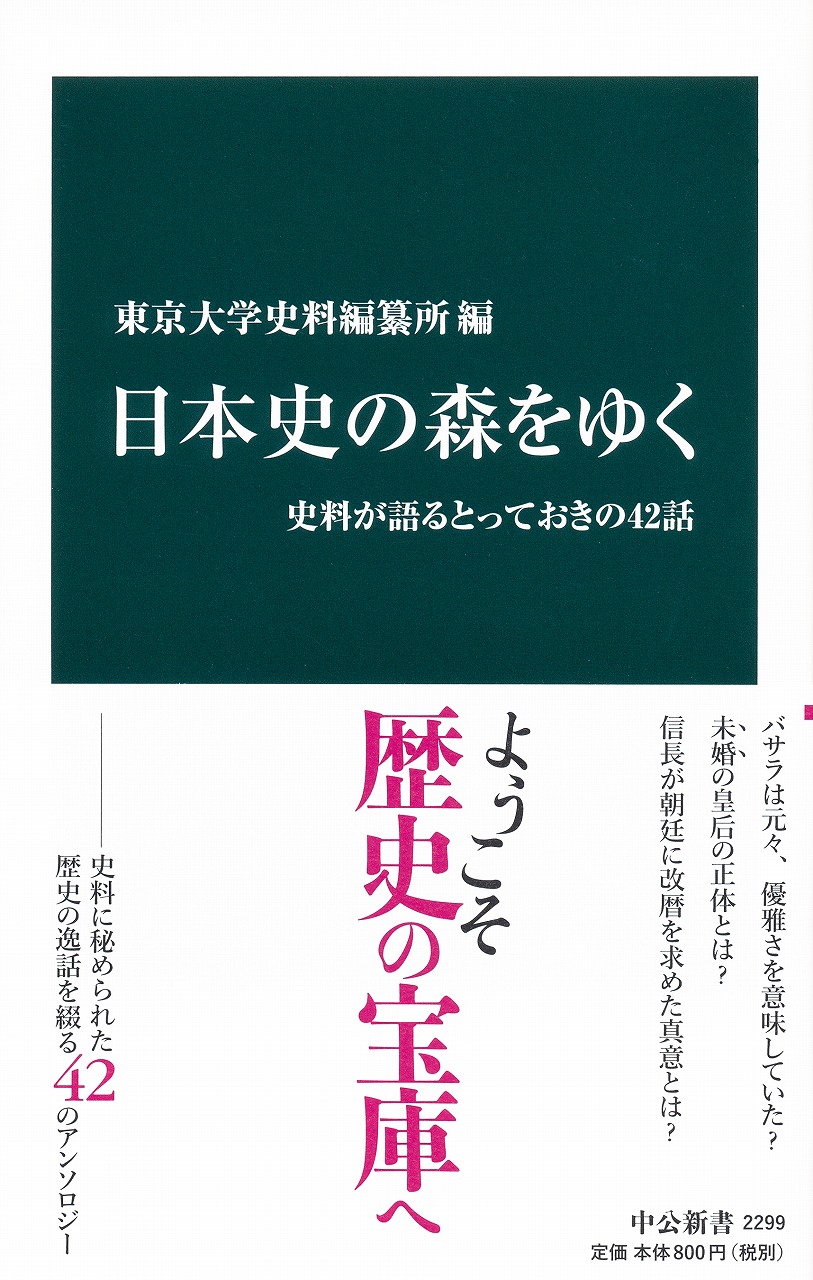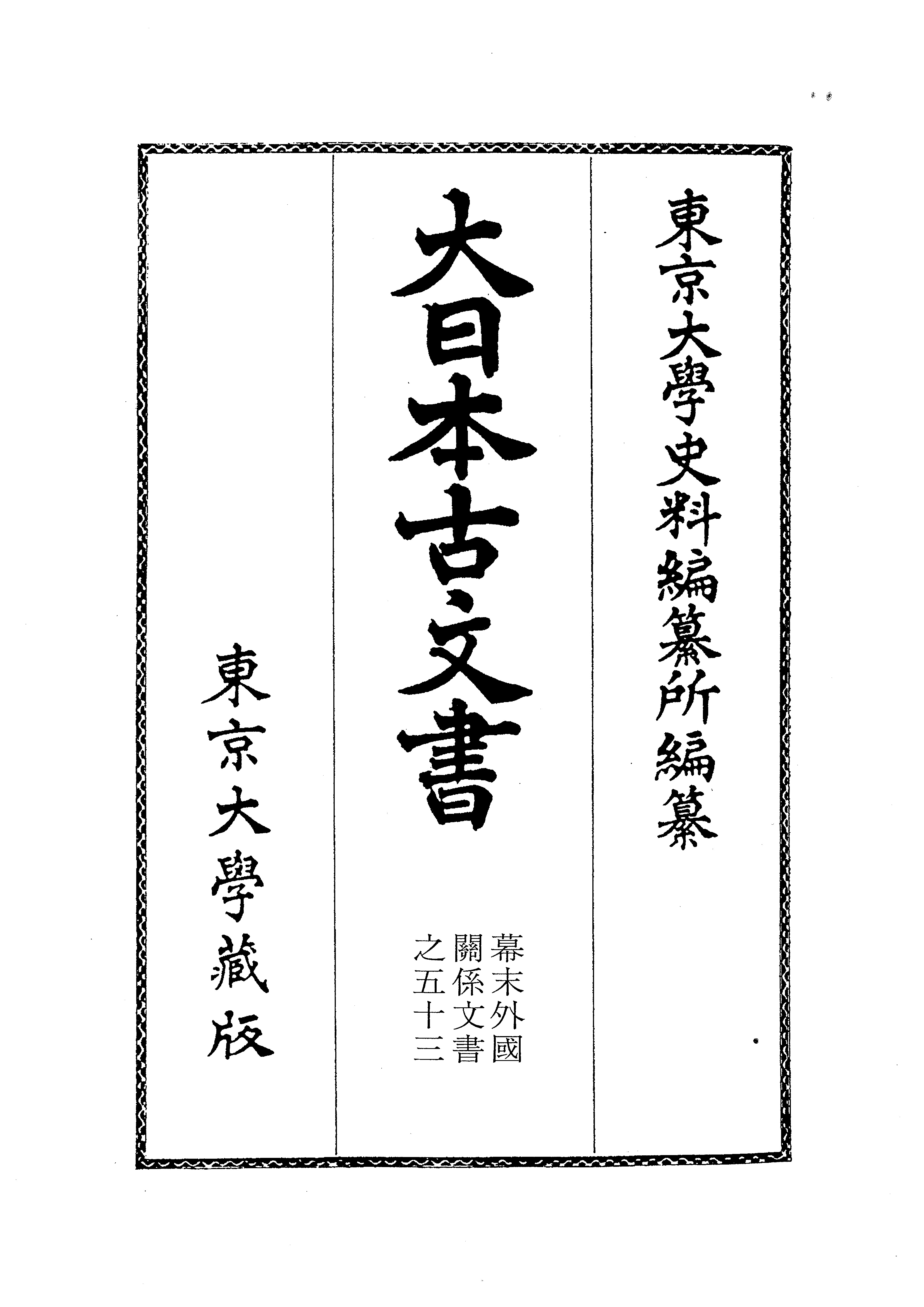
Title
Historical Materials of the Meiji Restoration Ii-ke Shiryo: Ruisan no bu (Dai-Nihon ishin shiryō: Documents of the Ii House, Vol. 29 - Collection Series)
Size
352 pages, A5 format
Language
Japanese
Released
April 21, 2016
ISBN
978-4-13-090829-0
Published by
University of Tokyo Press
Book Info
See Book Availability at Library
Japanese Page
Ii Naosuke (1815–1860), a regent of the Edo shogunate, is known both as the bloodthirsty mastermind of the Ansei Purge and a fearless promoter of the opening of Japan, who suppressed the oppositionists. It is difficult for historians to estimate his historical role. To praise or blame – that is the eternal question. The Documents of the Ii House, Historical Materials of the Meiji Restoration (Collection Series) contain extensive historical materials on Naosuke that were rigorously preserved by the Ii house from before the war, without ever being opened. The first volume was published in 1959, and it was after more than half a century of dedicated research that the main compilation was completed in 2016 with the publication of Volume 29 (covering the period between 1861 and 1862) presented here.
The more recent volumes are noteworthy because of their rich contents relating to the marriage of Princess Kazu-no- Miya and Shogun Tokugawa Iemochi that the late Naosuke government and the Kuze Hirochika and Andō Nobumasa governments attempted to realize. It is conventionally believed that the Kyoto shogunal deputy (shoshidai) began maneuvering for a marriage arrangement when Naosuke was at the height of his power in the second month of 1860. One document here clarified that the Emperor’s chief adviser (kanpaku; the biological father of the empress consort) appealed to Naosuke’s group at this time, “that we do consider the matter now [when the situation is relatively stable], so that the Court and the Shogunate may become harmonious just like fish and water.” After hearing this, Naosuke’s side suggested the terms that the messenger of the chief adviser should force on the family of Princess Kazu-no-Miya’s fiancé, Arisugawa-no-Miya House, in order to break the engagement “for the sake of His Imperial Highness.” The shogunal deputy was only doing his master’s bidding. If we look at this document—that is the messenger’s letter to Naosuke’s side—there is a tag with the text “Caution” in red ink attached to the back that says, “the sake of His Imperial Highness.” It shows how someone marked this moment of political movement between the Emperor’s chief advisor and the Regent, urging that it be handled cautiously.
A new topic that appears in Volume 29 is Shimazu Hisamitsu’s military march on Kyoto. Wanting to warn Shogun Iemochi of this impending crisis, officials from Hikone Clan used the former, unavailable connections with the women’s quarters in Edo Castle to try to appeal to the shogun’s birth mother. This was thwarted by one of Iemochi’s close aides, a former ally of Naosuke, who had severed those ties. At a loss for what to do, a Hikone retainer wrote in a letter, “We have no influence from this day on. I hoped that I could do, through the shogun’s mother, more effectively, but it did not go as planned. This is the end of the shogunal house’s fortunes. Lord and retainers alike have no choice but to finally perish in battle,” indicating the sudden shift in power relations.
This documentary operation lets one experience the real thrill of constructing political history as it allows one to combine sources that represent one aspect of politics with other sources to elucidate the course of events and the confronting axes.
Naosuke, who was at the center of the shogunate, was in possession of official reports and other documents from various offices. These include performance evaluations of middle- and low-ranking officials as well as prostitute survey reports and customer statistics from the pleasure districts of Kyoto. The former are new materials about low-level samurai society and the latter serve as an index for measuring economic stability in Kyoto as well as being a valuable reference for trends in the Edo-period sex industry. Volume 29 also contains hearsay on important developments in villages and neighboring domains as narrated by certain Kanto public security officials (Kantō torishimari deyaku) who frequented the Hikone Residence at Edo even after Naosuke’s death. The existence of such officials suggests new issues pertaining to the relationship between village administration and politics.
As a result of the accomplishment of the Documents of the Ii House (a supplement volume and index database planned), we can expect new developments in the research on Bakumatsu-period political history. They outline more than ten years of political changes as Japanese society became part of the global political and economic system—from the arrival of Perry to the opening of ports—through the lens of one central figure’s documents.
(Written by Yoshinori Yokoyama, Professor, Historiographical Institute / 2018)
Related Info
http://wwwap.hi.u-tokyo.ac.jp/ships/shipscontroller-e



 Find a book
Find a book



